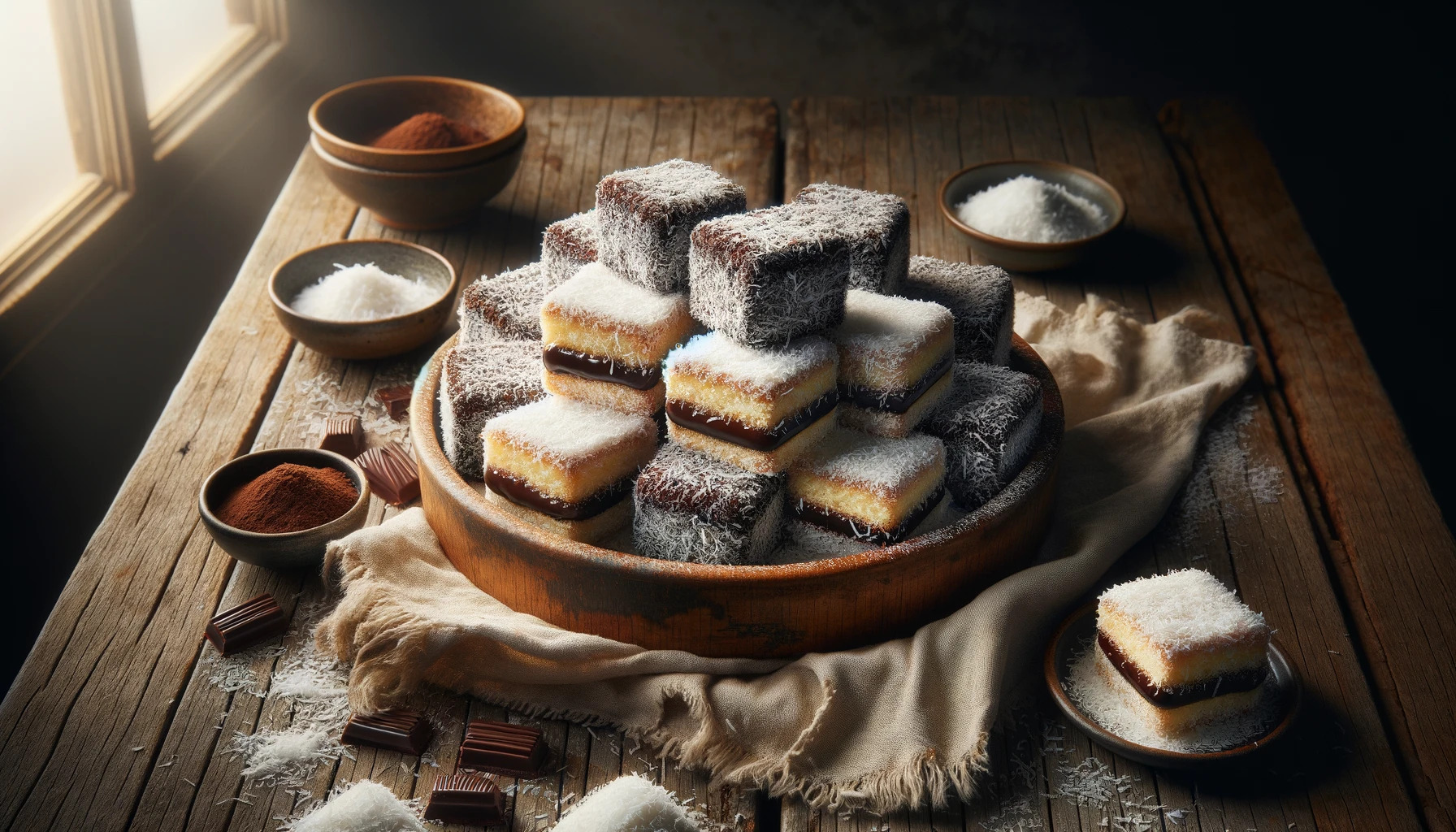(Many of the links in this article redirect to a specific reviewed product. Your purchase of these products through affiliate links helps to generate commission for Simplelivingeating.com, at no extra cost. Learn more)
Lamingtons stand out as signature cakes of Australia, embodying the essence of the country’s rich culinary heritage. These delightful squares of sponge cake, coated in a layer of chocolate icing and rolled in desiccated coconut, offer a perfect balance of sweetness and texture. Originating from Queensland, they have become a staple at bake sales, afternoon teas, and celebrations across the country. This article delves into the simplicity and elegance of making lamingtons, guiding you through each step to ensure you can recreate this Aussie favorite in your own kitchen.
Ingredients
Creating lamingtons requires basic pantry staples, ensuring that the charm of this dessert lies not in complex ingredients but in its delightful composition.
Sponge Cake
- 1 cup (125g) all-purpose flour
- 1 cup (220g) sugar
- 4 large eggs
- 1 teaspoon vanilla extract
- 1/2 teaspoon baking powder
- 1/4 teaspoon salt
- 2 tablespoons unsalted butter, melted
Chocolate Icing
- 4 cups (500g) icing sugar, sifted
- 1/3 cup (40g) cocoa powder, sifted
- 2 tablespoons unsalted butter, melted
- 1/2 cup (125ml) boiling water
Coating
- 2 cups (150g) desiccated coconut
Instructions
The magic of lamingtons lies in their simplicity. Follow these steps to create your very own batch of this beloved treat.
- Sponge Cake Preparation
- Preheat your oven to 180°C (350°F). Grease and flour a 20cm (8 inch) square cake tin.
- In a large bowl, beat the eggs and sugar until thick and pale, about 5 minutes. Add vanilla extract.
- Sift together the flour, baking powder, and salt. Gently fold into the egg mixture until just combined.
- Fold in the melted butter, ensuring not to deflate the batter.
- Pour into the prepared tin and bake for 25-30 minutes or until a toothpick inserted into the center comes out clean.
- Cool in the tin for 5 minutes, then turn out onto a wire rack to cool completely.
-
Chocolate Icing
- In a medium bowl, combine the sifted icing sugar and cocoa powder.
- Stir in the melted butter and boiling water until the mixture is smooth and of a thin consistency.
-
Assembling the Lamingtons
- Cut the sponge cake into 20 equal squares.
- Place the desiccated coconut in a shallow dish.
- Using forks or dipping tools, dip each sponge square into the chocolate icing, ensuring all sides are coated.
- Allow the excess icing to drip off, then roll the coated cake in the desiccated coconut.
- Place on a wire rack to set. Repeat with the remaining squares.
Tips
- Sponge Cake: For a lighter sponge, ensure your eggs are at room temperature and be gentle when folding in the dry ingredients to retain as much air as possible.
- Chocolate Icing: If the icing starts to thicken while you’re working, simply add a little more boiling water to maintain the desired consistency.
- Coating: To avoid clumping, refresh the desiccated coconut in the dish after every few lamingtons by giving it a quick stir or adding more coconut.
Serving and Presentation
Lamingtons are versatile in their serving options. They can be enjoyed as is, with a dusting of icing sugar, or accompanied by a dollop of whipped cream and fresh berries for a more decadent treat. Serve them on a platter in a single layer to showcase their uniform chocolate and coconut coating, making them an inviting sight for any dessert table.
Conclusion
The humble lamington is more than just a dessert; it’s a symbol of Australian heritage and communal spirit. Whether you’re a seasoned baker or new to the kitchen, making lamingtons is a rewarding experience that brings a piece of Australia into your home. With their simple ingredients, straightforward instructions, and room for creative serving options, lamingtons are a delightful treat that promises to bring joy to any occasion. So, tie on your apron, and let the sweet aroma of baking lamingtons fill your kitchen, marking the perfect celebration of Australian culinary tradition.



